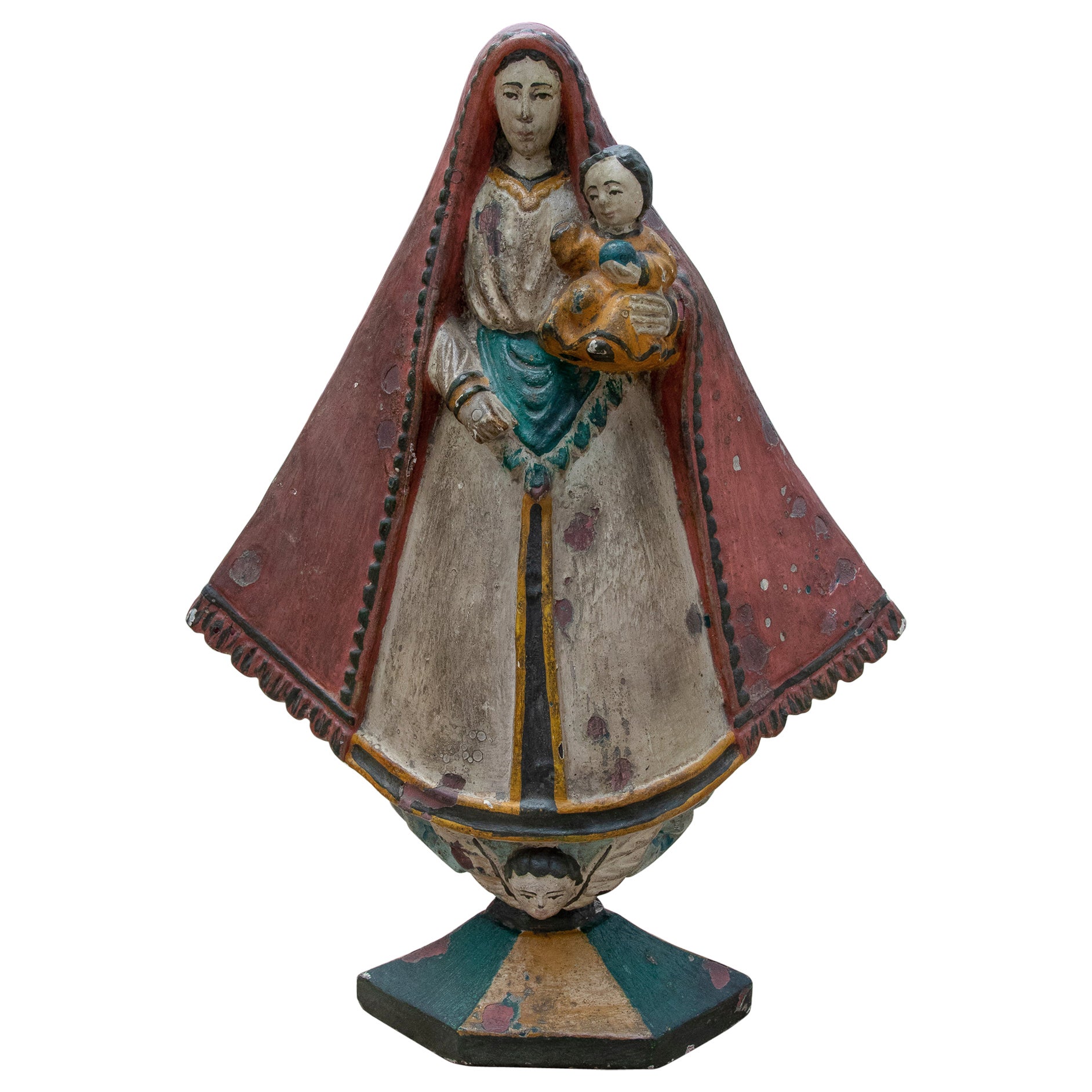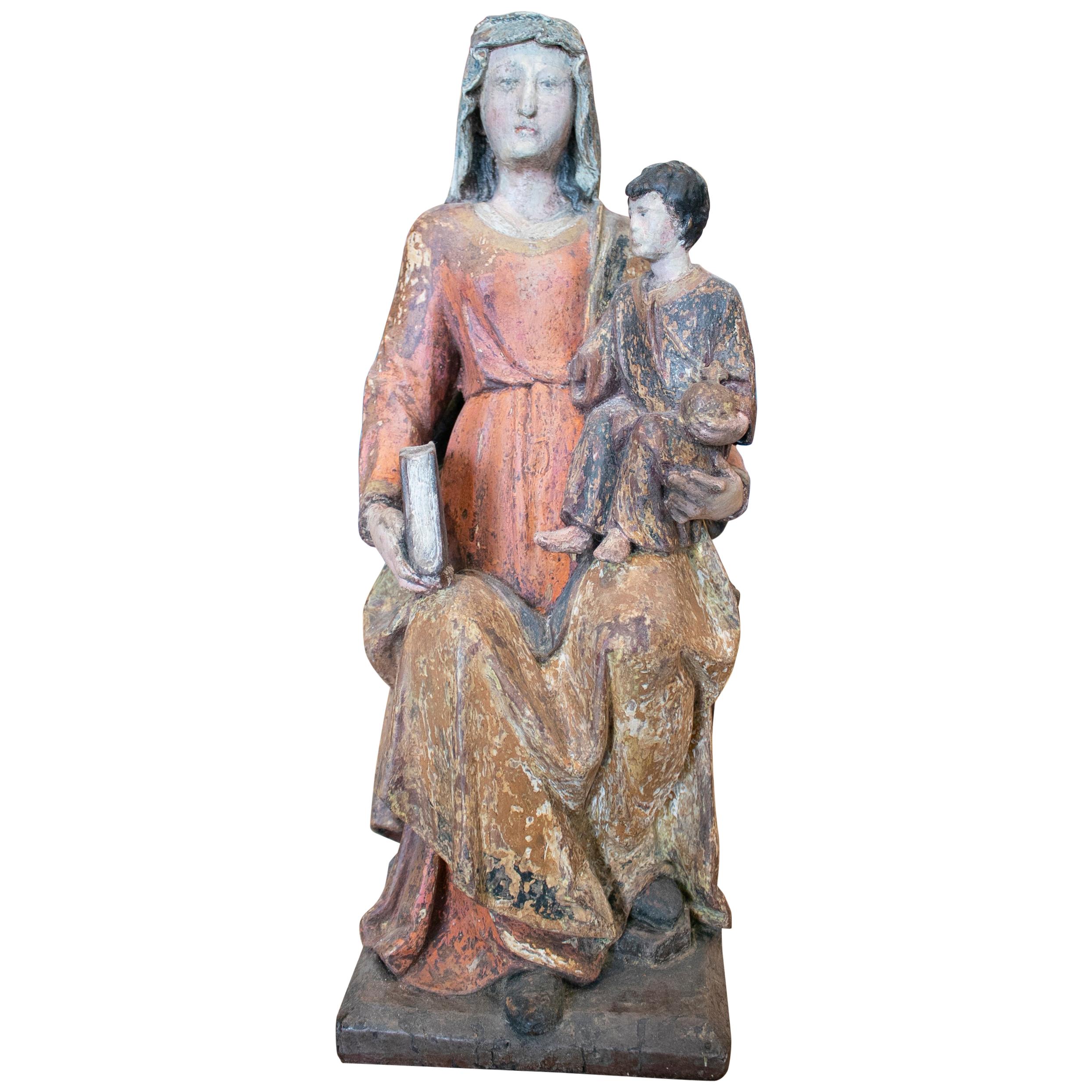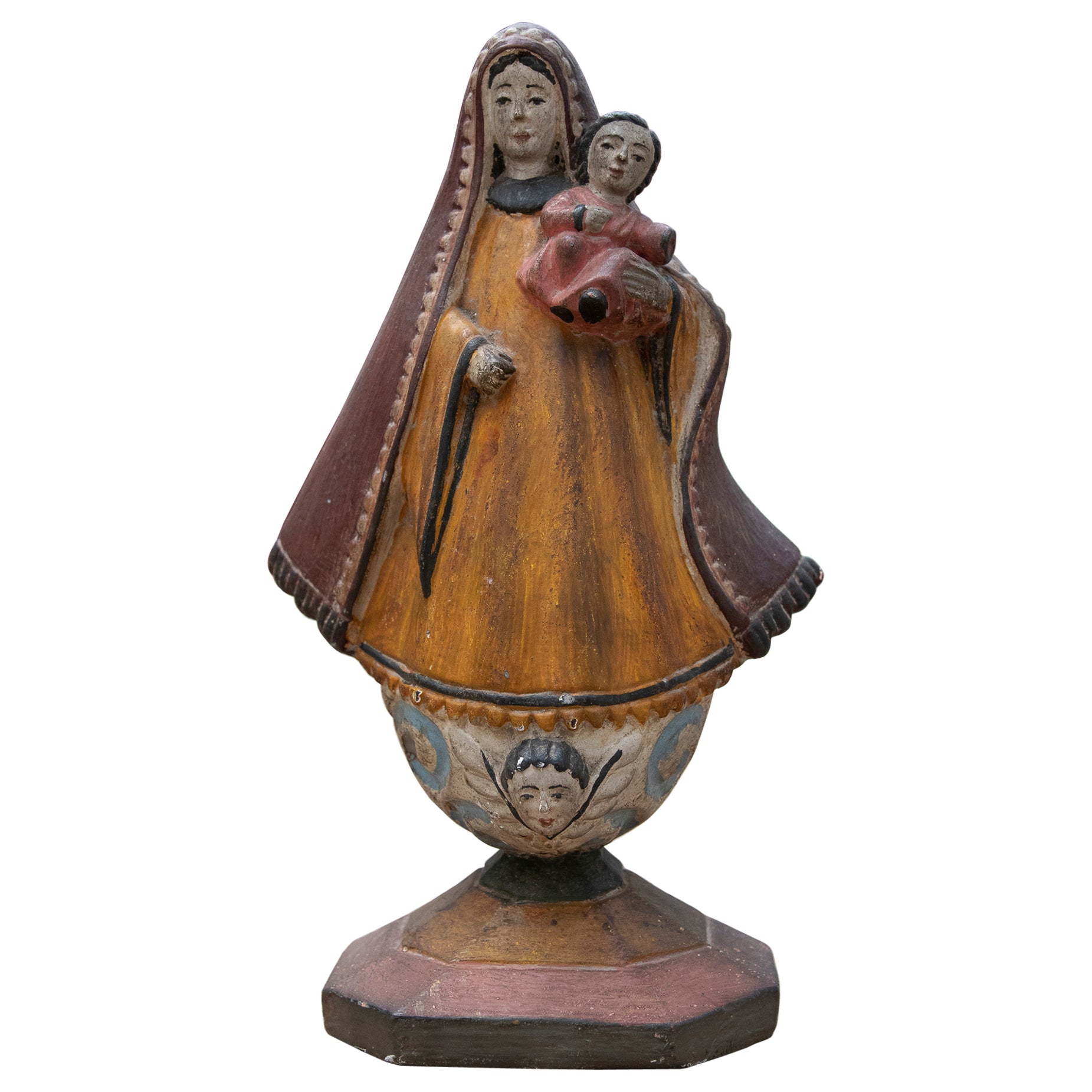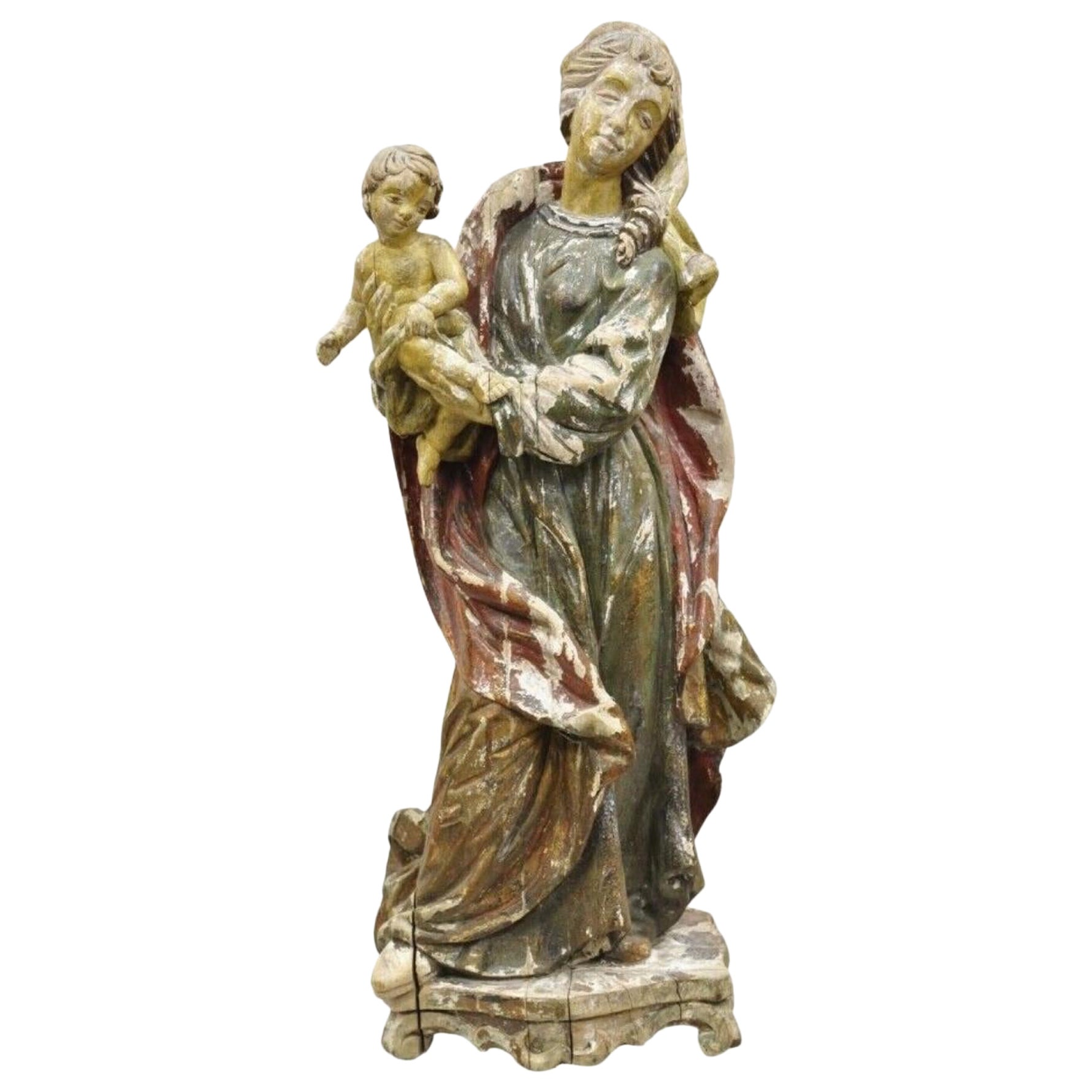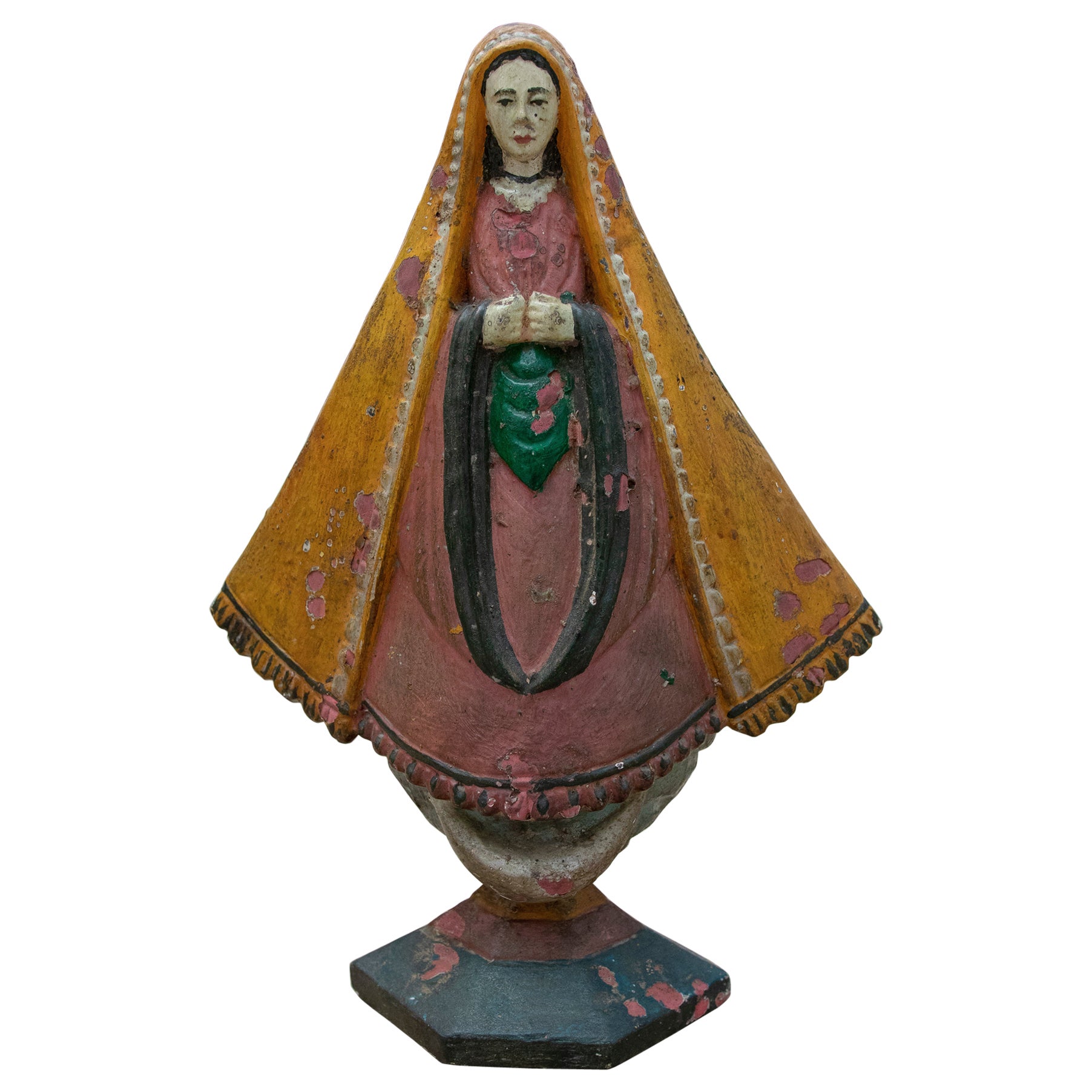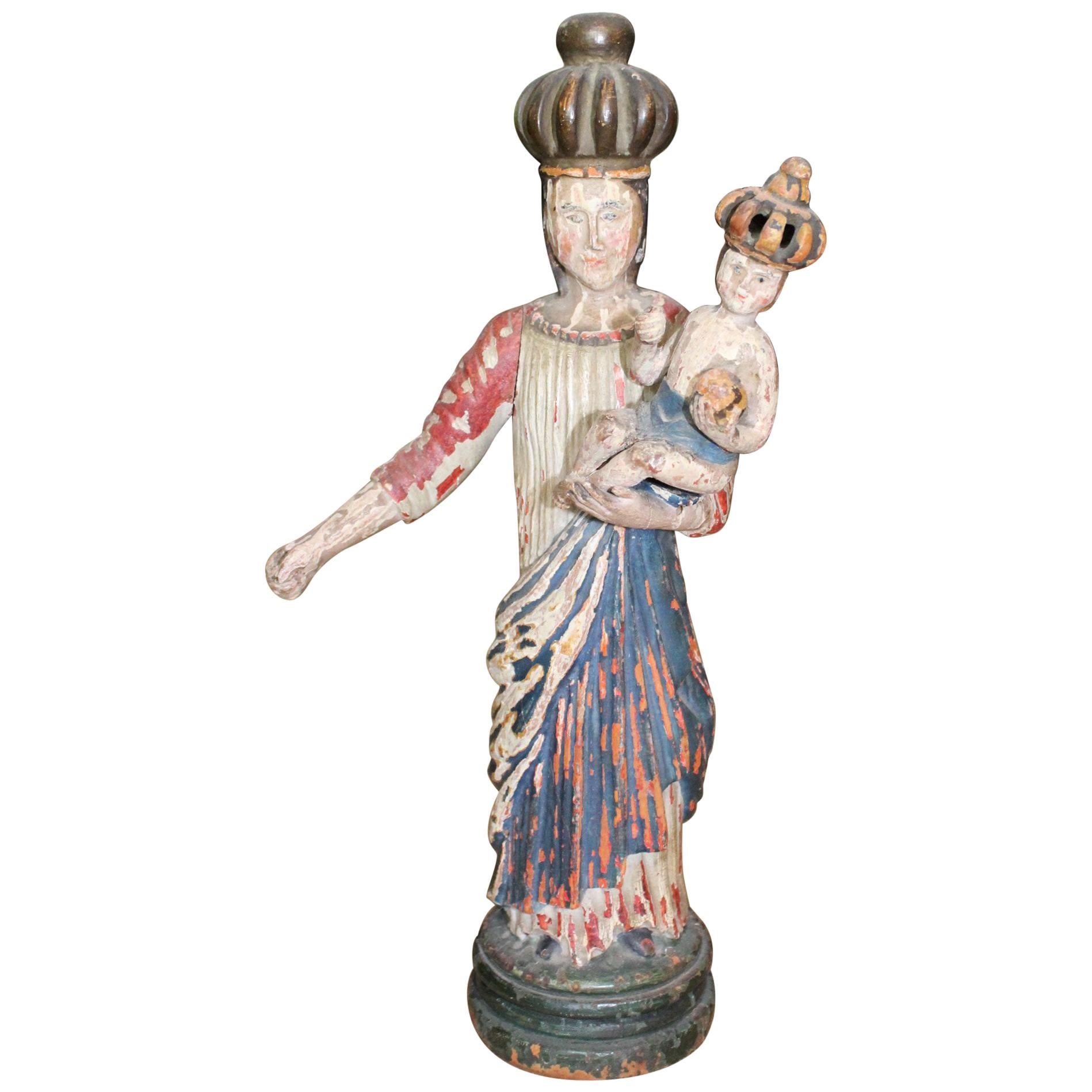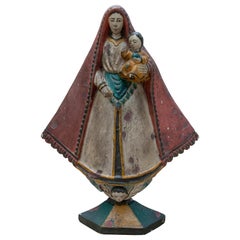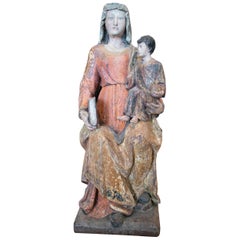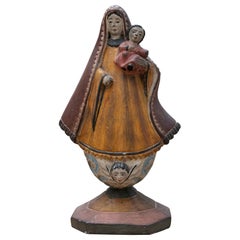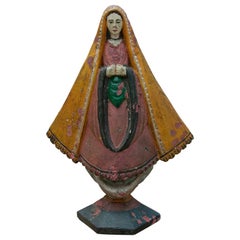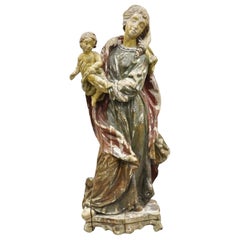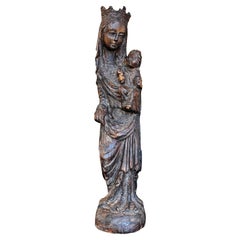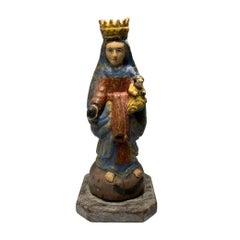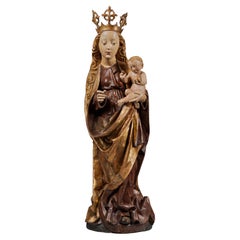Items Similar to 1970s Spanish Virgin & Child Hand Carved and Painted Wood Romanesque Sculpture
Want more images or videos?
Request additional images or videos from the seller
1 of 19
1970s Spanish Virgin & Child Hand Carved and Painted Wood Romanesque Sculpture
$3,594.43
£2,675.82
€3,000
CA$4,923.47
A$5,475.98
CHF 2,859.38
MX$66,636.79
NOK 36,518.70
SEK 34,248.10
DKK 22,837.95
Shipping
Retrieving quote...The 1stDibs Promise:
Authenticity Guarantee,
Money-Back Guarantee,
24-Hour Cancellation
About the Item
1970s Spanish Virgin and Child hand carved and painted wooden sculpture figure in mediaeval Romanesque style.
- Dimensions:Height: 27.96 in (71 cm)Width: 7.88 in (20 cm)Depth: 7.88 in (20 cm)
- Materials and Techniques:
- Place of Origin:
- Period:
- Date of Manufacture:1970
- Condition:Wear consistent with age and use.
- Seller Location:Marbella, ES
- Reference Number:1stDibs: LU3044326197742
About the Seller
5.0
Platinum Seller
Premium sellers with a 4.7+ rating and 24-hour response times
Established in 1996
1stDibs seller since 2017
702 sales on 1stDibs
Typical response time: <1 hour
- ShippingRetrieving quote...Shipping from: Marbella, Spain
- Return Policy
Authenticity Guarantee
In the unlikely event there’s an issue with an item’s authenticity, contact us within 1 year for a full refund. DetailsMoney-Back Guarantee
If your item is not as described, is damaged in transit, or does not arrive, contact us within 7 days for a full refund. Details24-Hour Cancellation
You have a 24-hour grace period in which to reconsider your purchase, with no questions asked.Vetted Professional Sellers
Our world-class sellers must adhere to strict standards for service and quality, maintaining the integrity of our listings.Price-Match Guarantee
If you find that a seller listed the same item for a lower price elsewhere, we’ll match it.Trusted Global Delivery
Our best-in-class carrier network provides specialized shipping options worldwide, including custom delivery.More From This Seller
View All19th Century Mexican Wooden Hand-Painted Virgin with Child in Arms
Located in Marbella, ES
19th Century Mexican wooden hand-painted virgin with child in arms.
Category
Antique Mid-19th Century Mexican Figurative Sculptures
Materials
Wood
15th Century Spanish Gothic Virgin and Child Polychrome Wooden Sculpture
Located in Marbella, ES
15th century Spanish Gothic Virgin and child polychrome figurative wooden sculpture.
Category
Antique 15th Century and Earlier Religious Items
Materials
Wood
19th Century Mexican Wooden Hand-Painted Virgin with Child in Arms
Located in Marbella, ES
19th Century Mexican wooden hand-painted virgin with child in arms.
Category
Antique Mid-19th Century Mexican Figurative Sculptures
Materials
Wood
19th Century Mexican Wooden Hand-Painted Virgin with Child in Arms
Located in Marbella, ES
19th century Mexican wooden hand-painted virgin with child in arms.
Category
Late 20th Century Mexican Figurative Sculptures
Materials
Wood
18th Century North Spanish Polychrome Wooden Virgin Sculpture
Located in Marbella, ES
18th Century north Spanish polychrome wooden sculpture of the Virgin Mary holding baby Jesus.
Category
Antique Late 18th Century Spanish Figurative Sculptures
Materials
Wood
19th Century Mexican Wooden Hand-Painted Virgin with Child in Arms
Located in Marbella, ES
19th century Mexican wooden hand-painted virgin with child in arms.
Category
Late 20th Century Mexican Figurative Sculptures
Materials
Wood
You May Also Like
Antique Spanish Latin Polychromed Carved Wood Figure Madonna and Child Statue
Located in Philadelphia, PA
Antique 32" Spanish Latin Polychromed Carved Wood Figure Depicting Madonna and Child. Item features is a tall impressive form, hand carved details with weathered gilt polychromed fin...
Category
Antique 18th Century Spanish Colonial Figurative Sculptures
Materials
Wood
Early 20th Century Carved Wood Mary and Child in Medieval Style
Located in San Francisco, CA
Early 20th Century wood Mary and Child in Medieval Style, likely carved in the Philippines.
17.75" x 4" x 4"
Category
Early 20th Century Philippine Figurative Sculptures
Materials
Wood
Early 19th Century Hand Carved Wood Sculpture of Virgen de Carmen Santo
Located in Guaynabo, PR
This carved wood colorful sculpture is handmade & painted by an unknown puerto rican craftsman. The Virgen del Carmen is the patron saint of fisherma...
Category
Antique Early 19th Century American Arts and Crafts Sculptures and Carvings
Materials
Wood
$2,800 Sale Price
20% Off
Polychrome carved wood Virgin and Child from the 15th Century
Located in Saint-Ouen, FR
POLYCHROME CARVED WOOD VIRGIN AND CHILD FROM THE 15TH CENTURY
ORIGIN: SOUTH GERMANY, SWABIA, NUREMBERG REGION
PERIOD: 15th CENTURY
Height: 94,6cm
Width : 28 cm
Depth : 18 cm
Lime wood
Original Polychromy
Good state of conservation
From 1430 onwards, sculpture underwent a profound stylistic renewal which continued until 1530, the so-called late Gothic period. In the Germanic countries, original sculptures flourished in an expressive and sensitive vein.
This renewal was inspired by the art of Nicholas of Leiden, who was active in Strasbourg in the 1460's. His style broke with the refined and delicate art of the international Gothic style in force throughout Europe around 1400. The figures became more authentic and realistic. The bodies became denser. Clothes are animated by deep, broken folds, the fabrics are heavy and have a great decorative value. In addition, the polychromy is intended to be illusionistic. The painting makes it possible to restore the texture of the materials, the richness of the textiles and the natural skin tone of the characters.
The dissemination of images through engraving and the great mobility of the artists led to the success of this style, which conquered the Upper Rhine, Swabian, Tyrolean and Franconian regions, contributing to the formation of a common stylistic identity in these regions. The economic boom in the flourishing German cities was conducive to the development of original production. Attracted by this prosperity, numerous workshops were set up in order to meet the orders of religious communities, the Church and the laity, including a clientele of middle-class rockers.
This precious Virgin and Child is depicted standing on a crescent moon, her head encircled by a crown of tall flowers. Her long wavy hair spreads over her shoulders, framing her beautiful oval face. Under fine eyebrows drawn with a brushstroke, her almond-shaped, slightly drooping eyes look at the Child with infinite softness. She is dressed in a long red dress with a rounded neckline, belted under the chest. The heavy fabric of her dress spreads out in broken folds at her feet. On her shoulders she wears a golden cloak. The drapery has deep folds. She holds out her right hand while she holds the Christ Child with her left.
Christ, with his well-defined hair, is naked. His cheeks are highlighted with red, he holds an apple in his left hand and with the other hand makes a sign of blessing towards the faithful.
Virgins with Child on a crescent moon were very popular in the second half of the 15th century, especially as the central subject of altarpieces in southern Germany and Austria. The crescent moon on which Mary is standing is reminiscent of the Woman of the Apocalypse. Often equated with the Virgin Mary.
This episode is taken from the Book of Revelation (12:1-6)
1 Then a great sign appeared in heaven: a woman clothed with the sun, with the moon under her feet and a crown of twelve stars on her head. ; 2 She was pregnant, and she cried out because she was in labor, in pain from giving birth. ; 3 Then another sign appeared in heaven: it was a great fiery red dragon, with seven heads and ten horns, and seven royal crowns on his heads. ; 4 His tail swept down a third of heaven's stars and threw them to the earth. The dragon stood in front of the woman who was about to give birth so that when she gave birth, he might devour her child. ; 5 She gave birth to a son, a male child who is to rule all the nations with an iron rod. Her child was snatched up to God and his throne. ; 6 Then the woman fled into the desert, where God has prepared a place for her. There she will be taken care of for one thousand two hundred sixty days.
Some theologians see in this woman a reference to the Virgin Mary and in the child, Jesus.
This remarkable work is a very fine example of sculpture from Swabian workshops in the last decades of the 15th century. It presents all the characteristic stylistic elements: a highly girdled silhouette, an abundant drapery with angular folds, but also a great physical presence accentuated by the polychromy that restores the anatomical details. This group is made of a wooden log. The deep folds of the drapery highlight the movement of the Virgin holding the child.
Bibliography :
Sophie Guillot de Suduiraut, Dévotion et Séduction, Sculptures souabes des musées de France, vers 1460-1530, Paris musée du Louvre-Éditions somogy, 2015
“Revelation 12 - Common English Bible...
Category
Antique 15th Century and Earlier German Gothic Figurative Sculptures
Materials
Wood
18th Century Italian Carved Wood Polychrome Virgin Mary Sculpture
Located in Doha, QA
This is an outstanding Italian 18th century carved wood polychromed sculpture of Virgin Mary. The Sculpture is hand painted with some remains of a gold gilt in few places and originated until lately in a private Villa in Tuscany (Italy). The colors are typical red, blue and green are spectacular on this large figure. The Virgin's hands are joined together in a prayer, while standing on a pedestal on the both sides of which are devil's horns (bottom left side horn missing ) symbolising Holly Mary defeating the Evil, protected by the Holly Ghost and an Angel. A story tells the pose of the Virgin Mary sculpture...
Category
Antique 18th Century Italian Baroque Figurative Sculptures
Materials
Wood, Pine
A Carved Polychrome Painted Figure of the Virgin and Christ, 18th Century
Located in ARMADALE, VIC
A Carved and Polychrome-Painted Group of the Virgin and Christ, 18th Century
The modelled standing in robes holding the Christ child, on a rockwork base with a seraphim mask to the ...
Category
Antique 18th Century French Baroque Figurative Sculptures
Materials
Hardwood
More Ways To Browse
Spanish Carved Wood Furniture
Spanish Carved Wood
Virgin And Child
Romanesque Furniture
Romanesque Style
Spanish Carved Figure
Napoleon Bonaparte
Art Deco Dancing Bronze
Bronze Dancer Deco
Verdigris Sculpture
Antique Wooden Saints
Italian 19th Century Marble Statue
Marble Feet Sculpture
Wood Torso
Sculptures In The Style Of Giacometti
Apollo Gold
Articulated Sculpture
Carved Wood Saint
